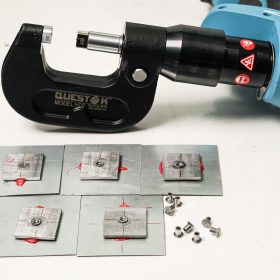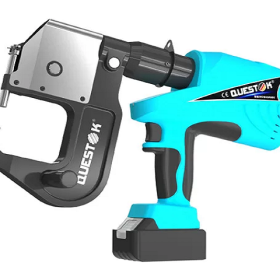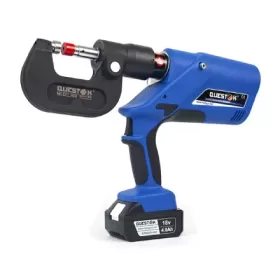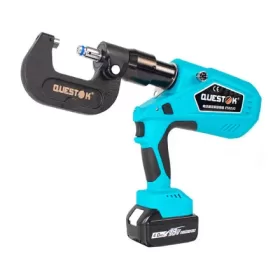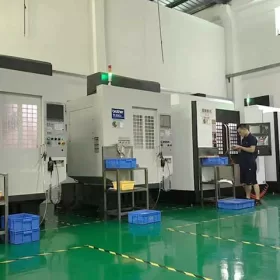Solid Rivets vs. Other Fastening Methods- A Comparison
In the realm of industrial and construction endeavors, the choice of fastening methods can significantly impact the integrity, durability, and longevity of structures. Among the plethora of options, solid rivets stand as a time-tested and reliable solution that has withstood the rigors of time. This article will delve into the intrinsic characteristics of solid rivets and compare them against other popular fastening methods to provide a comprehensive understanding of their respective strengths and limitations.
Mechanical Strength and Integrity
Solid rivets excel in providing exceptional mechanical strength and rigidity. The riveting process involves hammering or pressurizing a rivet shank to form a permanent connection between two or more metal components. The pressure exerted during riveting results in a tightly fitted joint that resists shear, tension, and vibration forces. This makes solid rivets ideal for applications where high structural integrity is paramount, such as bridges, aircraft, and heavy machinery.
Durability and Corrosion Resistance
Solid rivets are inherently durable and resistant to corrosion due to their solid construction and often-used materials. They are typically manufactured from high-strength alloys like steel or aluminum, which can withstand harsh environmental conditions, including moisture, chemicals, and temperature fluctuations. This durability makes solid rivets suitable for outdoor applications, exposure to corrosive elements, and long-term use.
Inspection and Maintenance
Solid rivets offer the advantage of easy inspection and maintenance. The visible nature of the rivet heads allows for quick visual checks to assess the integrity of the joint. Unlike some other fastening methods, rivets do not require specialized tools or equipment for removal or replacement, making repairs or modifications relatively straightforward.
Other Fastening Methods
Bolts and Nuts: Bolts and nuts provide a versatile and adjustable connection. They can be tightened or loosened to accommodate assembly and disassembly requirements. However, bolts and nuts may be more susceptible to vibration loosening and require regular maintenance.
Screws: Screws offer a convenient and quick method of fastening. They can be easily installed with a screwdriver and removed without damaging the components being joined. However, screws may have lower shear strength than rivets and can be prone to stripping.
Welding: Welding is a permanent fastening method that involves melting metal components together. It provides high strength and rigidity but requires specialized equipment and expertise. Welding may also introduce heat distortion and can be challenging for certain materials.
Conclusion
Solid rivets remain a preferred fastening method for applications demanding high structural integrity, durability, and corrosion resistance. Their mechanical strength, ease of inspection, and repair make them a reliable and cost-effective choice. While other fastening methods offer advantages in terms of versatility and ease of use, they may not provide the same level of security and longevity as solid rivets. The choice of fastening method ultimately depends on the specific requirements and conditions of the application.
- Company News
- Industry News
- Tag
- Tags
-
The Advantages of Questok Rivet Guns: Precision, Efficiency, and Durability
In industrial fastening applications, the choice of tools directly impacts productivity, safety, and long-term cost-effectiveness. Questok rivet guns have emerged as a standout solution for professionals across aerospace, automotive, and construction sectors. Combining advanced engineering with user-centric design, these tools deliver unmatched performance. Below are the key advantages that make Questok rivet guns a preferred choice:
-
Rivet Gun FAQ
Rivet Gun FAQ-SPR
-
Fast Assembly and Repair With Cordless Solid Rivet Gun
Questok cordless solid rivet gun stands out as a pivotal innovation, merging portability with power to facilitate efficient and effective fastening in a myriad of applications.
-
Redifine The Role of Self-piercing Riveting Gun Machine
Self-piercing riveting adopts high-speed mechanical fastening skill that joins thin sheet materials, typically steel and aluminum alloys.
-
The Latest Innovations in Clinching Tool Design
Explore the latest innovations in clinching tool design, redefining precision, efficiency, and versatility in material joining.
-
The Application and Maintenance of Self-Piercing Rivet Guns
Delve into the applications of self-piercing rivet guns in the automotive and aerospace industries and reveal the essential maintenance practices that ensure their accuracy and efficiency.
-
Rivetless Riveting Gun for Ventilation Duct Projects
The ventilation duct rivetless gun is a tool for riveting ventilation ducts without rivets.
-
Guide to Using Self-Piercing SPR Riveting Gun
In the automotive industry, self-piercing SPR (Self-Piercing Rivet) riveting guns are commonly used for joining metal components in vehicle bodies, including BMW vehicles.
-
Rivet Gun FAQ
Rivet Gun FAQ-SPR
-
User-Friendly Features- Making Riveting Easy with Electric Blind Rivet Guns
Electric blind rivet guns are essential tools for industrial applications, providing a convenient and efficient way to fasten materials together. These tools have significantly advanced, incorporating user-friendly features that enhance their functionality and ease of operation. This article explores several key user-friendly features of electric blind rivet guns, highlighting how they simplify and streamline the […]
-
Unleashing Potential- Unlocking the Versatility of a Handheld Rivet Gun
In the realm of construction and fabrication, precision and efficiency reign supreme. Among the indispensable tools that empower craftsmen and DIY enthusiasts alike, the handheld rivet gun stands as a beacon of versatility and innovation. This unassuming device harbors a hidden potential that belies its compact form, offering a plethora of applications that unlock unbounded […]
-
Versatile Fastening- Applications of the Handheld Rivet Gun Across Industries
In the realm of fastening, the handheld rivet gun stands as a testament to ingenuity and versatility. Its ability to effortlessly join materials with sheer strength and permanence has revolutionized manufacturing and construction processes, leaving an enduring mark on diverse industries. Aerospace: Where precision and reliability are paramount, the rivet gun shines. In aircraft assembly, […]
-
The Role of Automation in Electric Rivetless Clinching
Electric rivetless clinching (ERC) is a lightweight joining process that eliminates the need for rivets or other fasteners. This can lead to significant cost savings and increased production efficiency. Automation plays a critical role in ERC, enabling high-speed and high-volume production. Automated Feed Systems Automated feed systems are used to accurately position the two workpieces […]
-
Why Choose a Universal Self-Piercing Riveting Gun for Your Projects?
In the realm of construction and fabrication, riveting guns stand as indispensable tools for creating secure and robust connections. Among the various types available, universal self-piercing riveting (SPR) guns have emerged as a game-changer due to their versatility and efficiency. This article will delve into the compelling reasons why choosing a universal self-piercing riveting gun […]
-
Why Choose Stainless Steel Hollow Rivets for Your Projects?
In the world of industrial manufacturing, choosing the right fasteners for your projects is crucial for ensuring longevity and reliability. Among the many options available, stainless steel hollow rivets stand out as a superior choice for a wide range of applications. This article delves into the compelling reasons why stainless steel hollow rivets are the […]
-
Top Trends in Electric Rivetless Clinching Guns
In the realm of fastening technology, electric rivetless clinching guns have emerged as a revolutionary solution for a wide range of industrial applications. These advanced tools offer several преимущества and capabilities, revolutionizing the way businesses approach their fastening needs. Adoption of Brushless Motors Brushless motors have gained significant traction in electric rivetless clinching guns due […]
